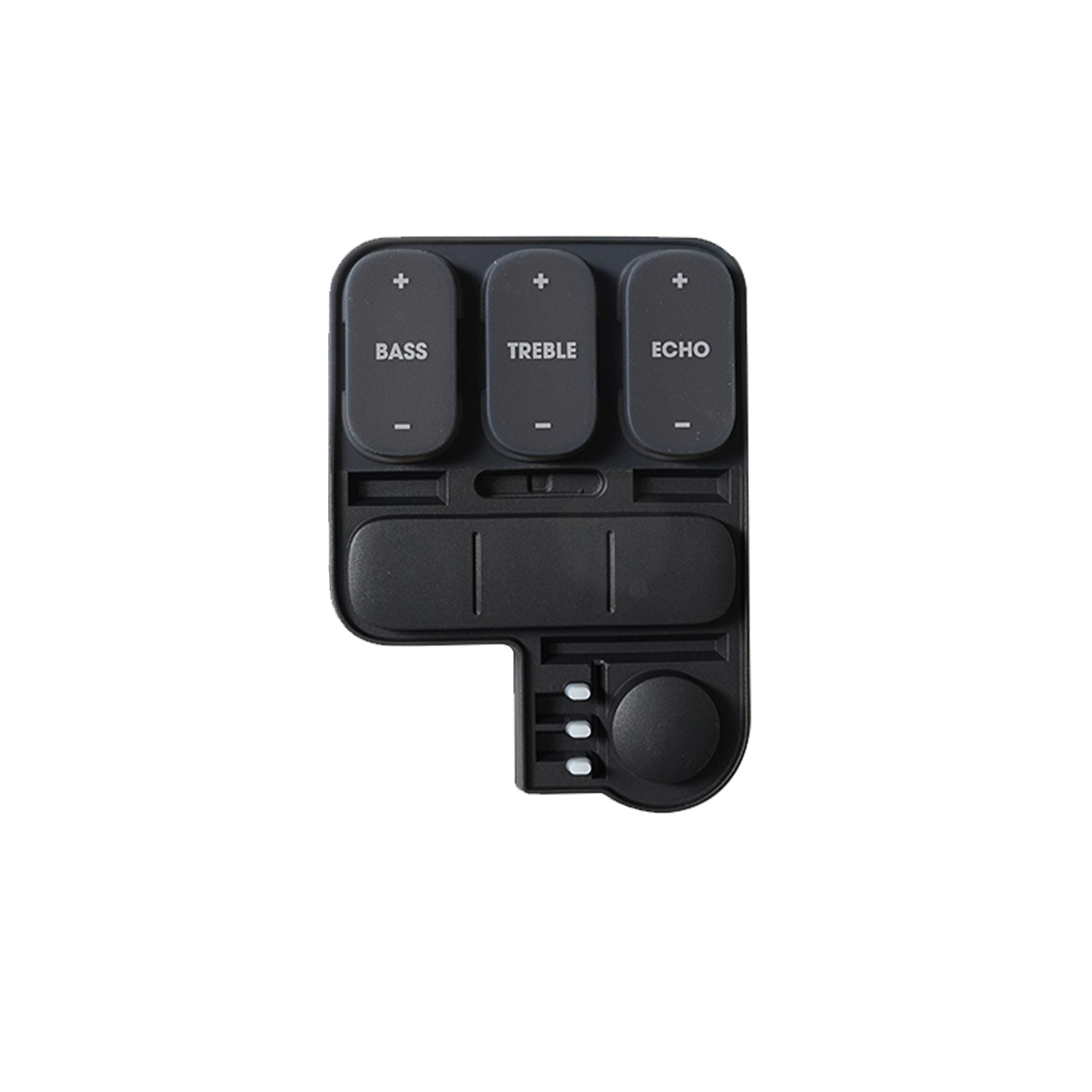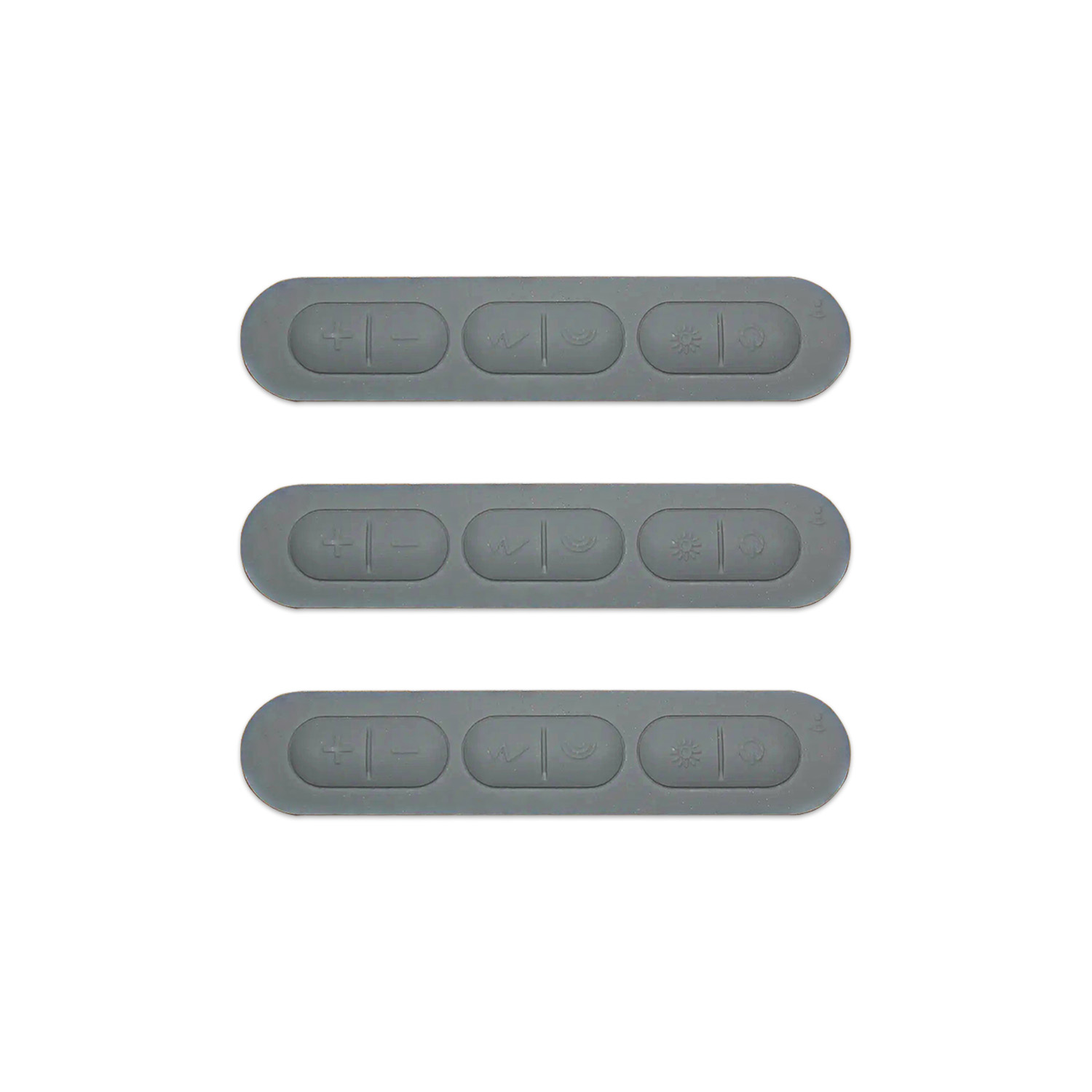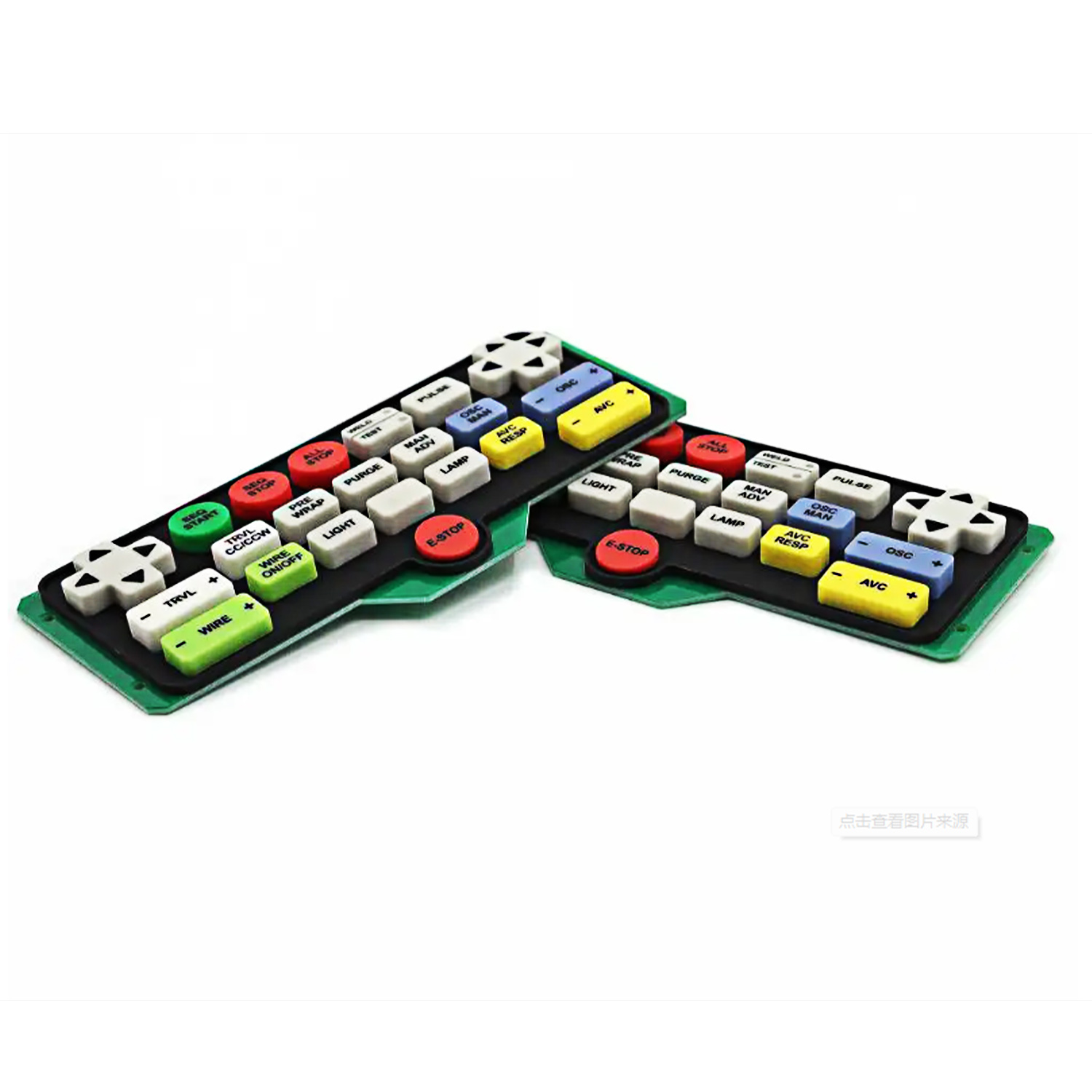




| Silicone Keypad | |
| Shape | Customized |
| Materials | Silicone |
| Performance | Waterproof, Dustproof, UV Resistant |
| Dimension | OEM service according to custom requirements |
| Colour | Pantone and RAL color matching system |
| Adhesive | 3M, Nitto, Tesa etc… |
| Printing | Custom Silk Screen Printing, Digital Printing |
| Work Temperature | -40℃~130℃ |
| Surface Finishing | Laser Etching, Screen Printing, Spraying, UV Coating, etc |
| Thickness of Epoxy | 0.5-3mm, thickness as request |
What is A “Silicone Keypad”?
Silicone keypad are key products made of silicone as raw materials. Silicone keypad belong to a product category of silicone products. Protective silicone keypad has excellent heat resistance, cold resistance, environmental resistance, electrical insulation, fatigue resistance and other characteristics.
Features & Benefits of Silicone Keypad Include:
Silicone keypad features
The silicone material is known for its softness and elasticity, which makes the silicone pad more comfortable to the touch; The silicone keypad has good wear resistance and can withstand frequent use and tapping without damage. It also has excellent water and dust resistance, which is particularly important in wet or dusty environments to ensure the stability and reliability of the keypad.
Silicone as an environmentally friendly material, its production and use process has less impact on the environment, in line with the requirements of sustainable development.
Advantages of silicone keypad
The soft and flexible design of the silicone keyboard provides users with a more comfortable and natural experience.
Silicone keypads are usually waterproof and dust-proof and are suitable for a variety of working environments.
Silicone keyboards are generally light, easy to clean, and easy to carry and use.
What Special Features Can Be Incorporated into Silicone Keypad?
Soft touch silicone keypads can withstand high temperatures without deforming or melting, which makes them usable in high-temperature environments. Smooth surface and enhanced feel. The flexibility of silicone allows the creation of curved or irregularly shaped keypads. This flexibility also means they can be adapted to irregular surfaces, providing a safer and more stable fit. When used with conductive materials, conductive silicone keypads can provide excellent electrical conductivity. This is useful in applications that require precise electrical switches or sensing.
BX Panel Silicone Keypad Technical Information
- Production process
- Mold design and development
Design mold: According to the 3D drawing or sample provided by the customer, design the opening mold drawing, and then manufacture mold. Mold design needs to consider the shape, size, elastic wall and other factors of the key to ensure the accuracy and feasibility of the mold.
Making molds: Using materials such as metal to make molds that have cavities corresponding to the shape and position on the keys.
- Rubber mixing
Material preparation: Preparation of silica gel raw materials, usually including silica gel base and curing agent, these components are mixed together in a specific ratio to achieve the desired properties of the final product.
Mixing and color matching: the silica gel raw material is mixed, and according to the need to add color paste, fluorescent agent or anti-static additives, etc., for color matching. The mixed raw material is cut into strips suitable for molding.
- Vulcanization molding
Injection mold: The mixed silicone material is injected into the mold, ensuring that the silicone material fills every corner of the mold.
Vulcanization process: The mold is heated to a specific temperature and pressure is applied to vulcanize the silicone material in the mold. This process helps to cross-link silicone molecules to form a sturdy button. The vulcanization process can use compression molding, transfer molding, or injection molding.
Demoulding: After vulcanization, open the mold and take out the button. At this point, the key has a certain hardness and elasticity.
- Post-processing
Deburring: Use a punch or manually remove the burring and edge of the key edge, so that the appearance of the key is more neat and beautiful.
Quality check: Quality check of the keys to ensure that there are no defects or defects in the keys. If any problems are found, the keys may need additional processing or be discarded.
- Printing process
Step1 Preparation for printing
Prepare printing materials: including ink, screen, scraper, etc.
Adjust the press: Adjust the press pressure and speed according to the size and shape of the keys.
Step 2 Print
Screen printing/oil spray: the ink is evenly coated on the screen plate, and the ink is printed to the key surface by pressure. This process requires precise control of the thickness and uniformity of the ink.
Curing: After printing is completed, the keys are cured (such as drying or UV curing) to ensure that the ink is completely dry and cured on the surface of the keys.
What Industries Use Silicone Keypad?
Custom silicone keypad are often used in electronic calculators, remote controls, telephones, wireless telephones, electronic toys, computer keypad, learning machine keypad and so on.